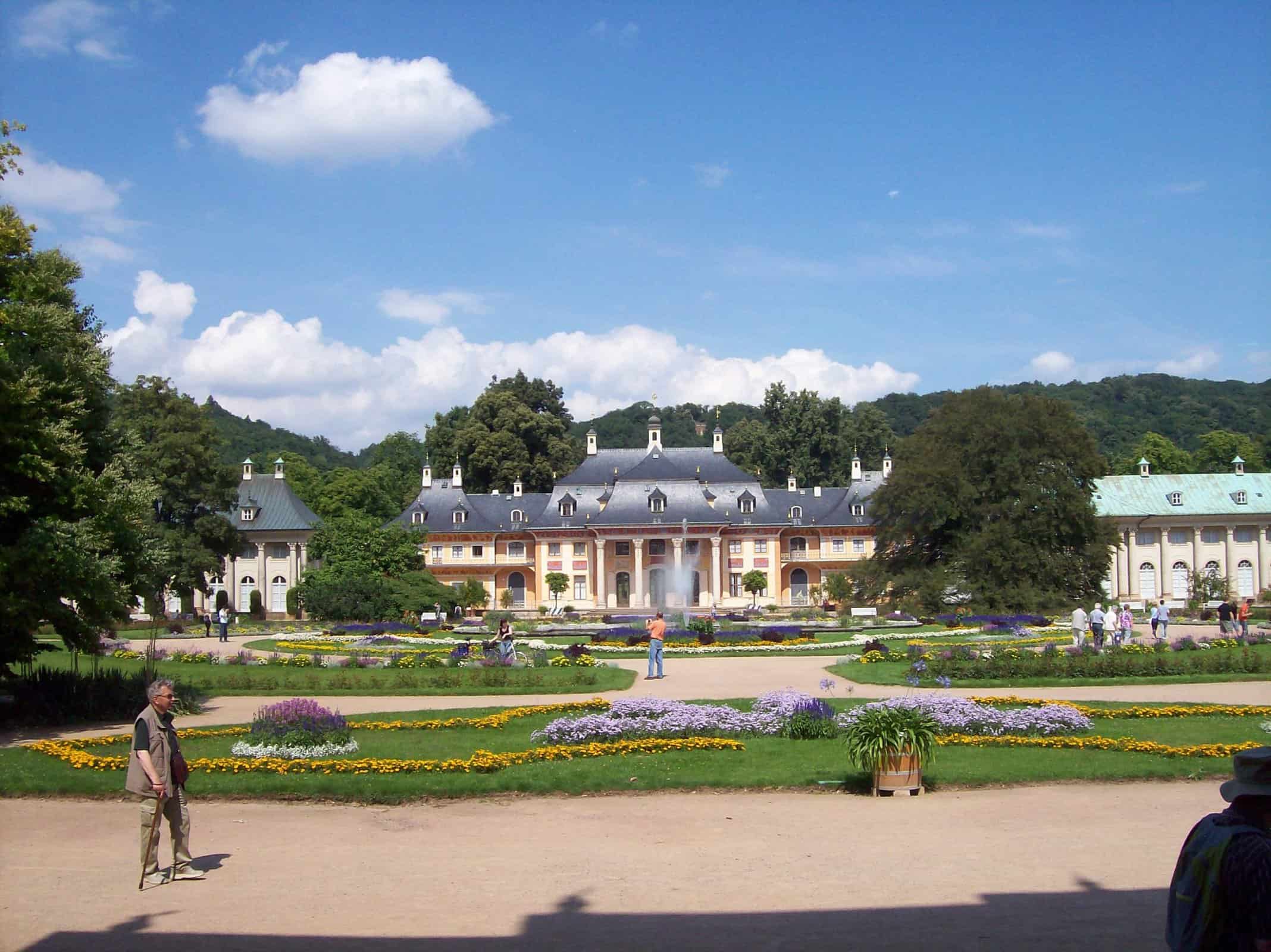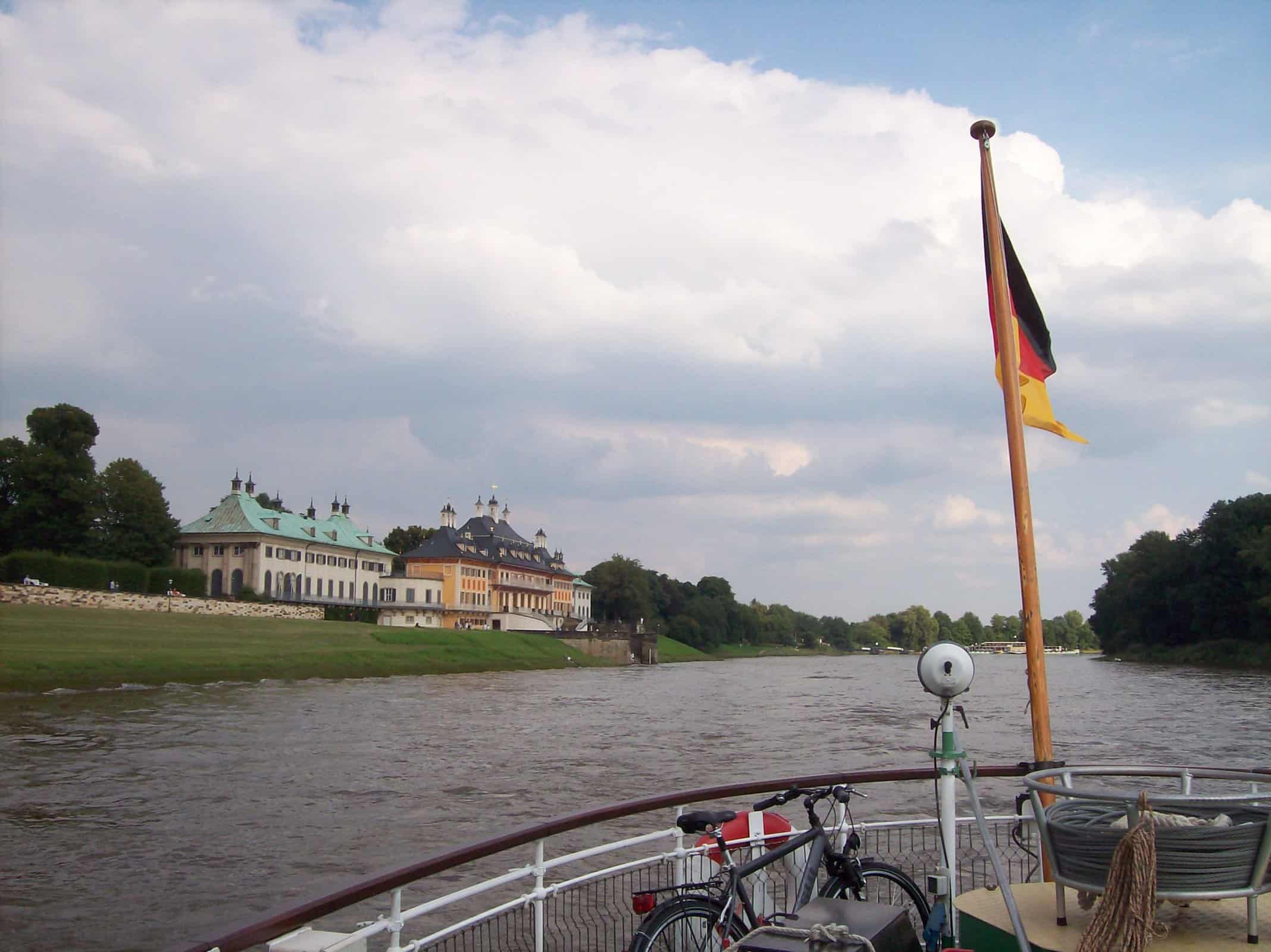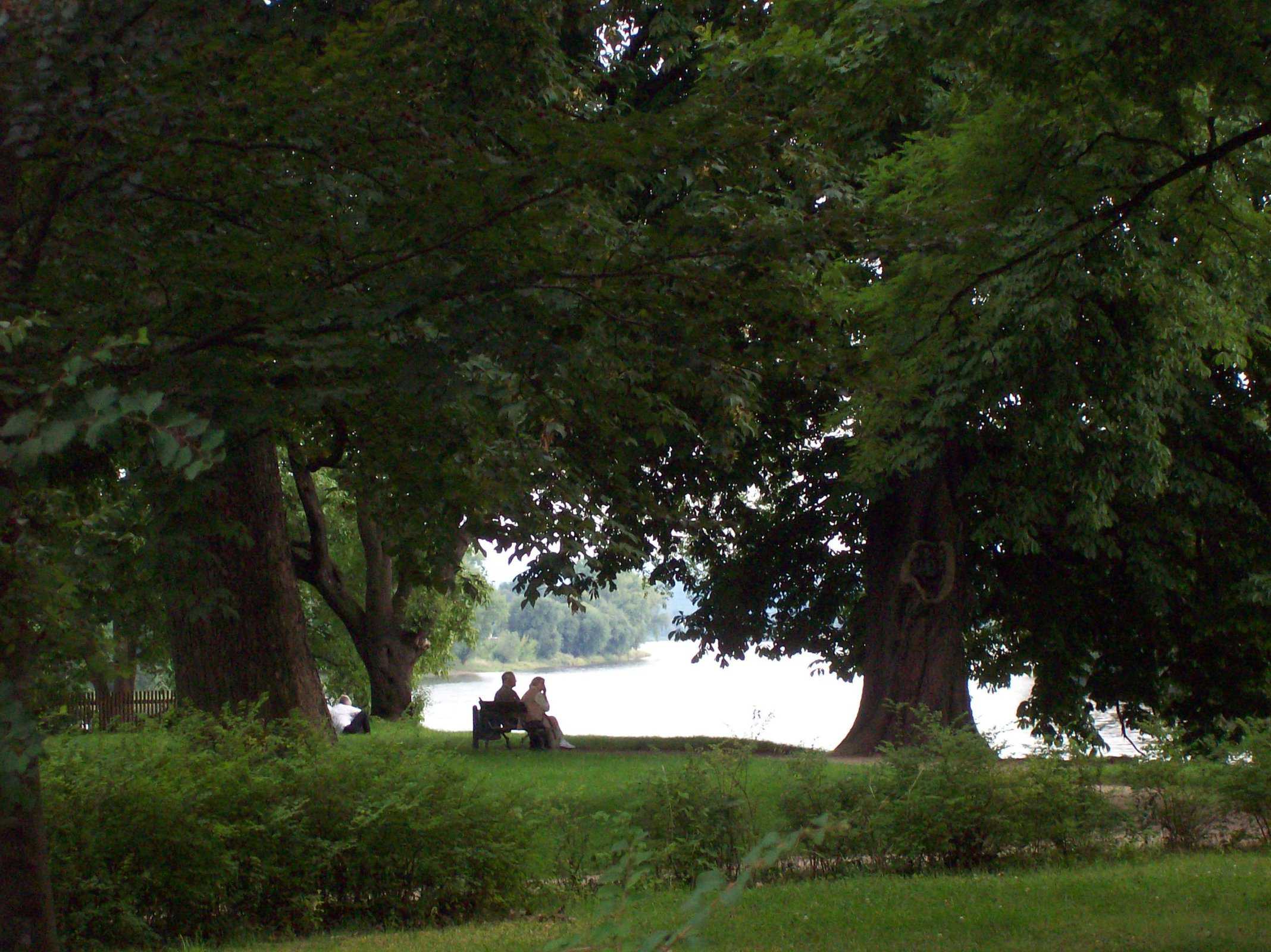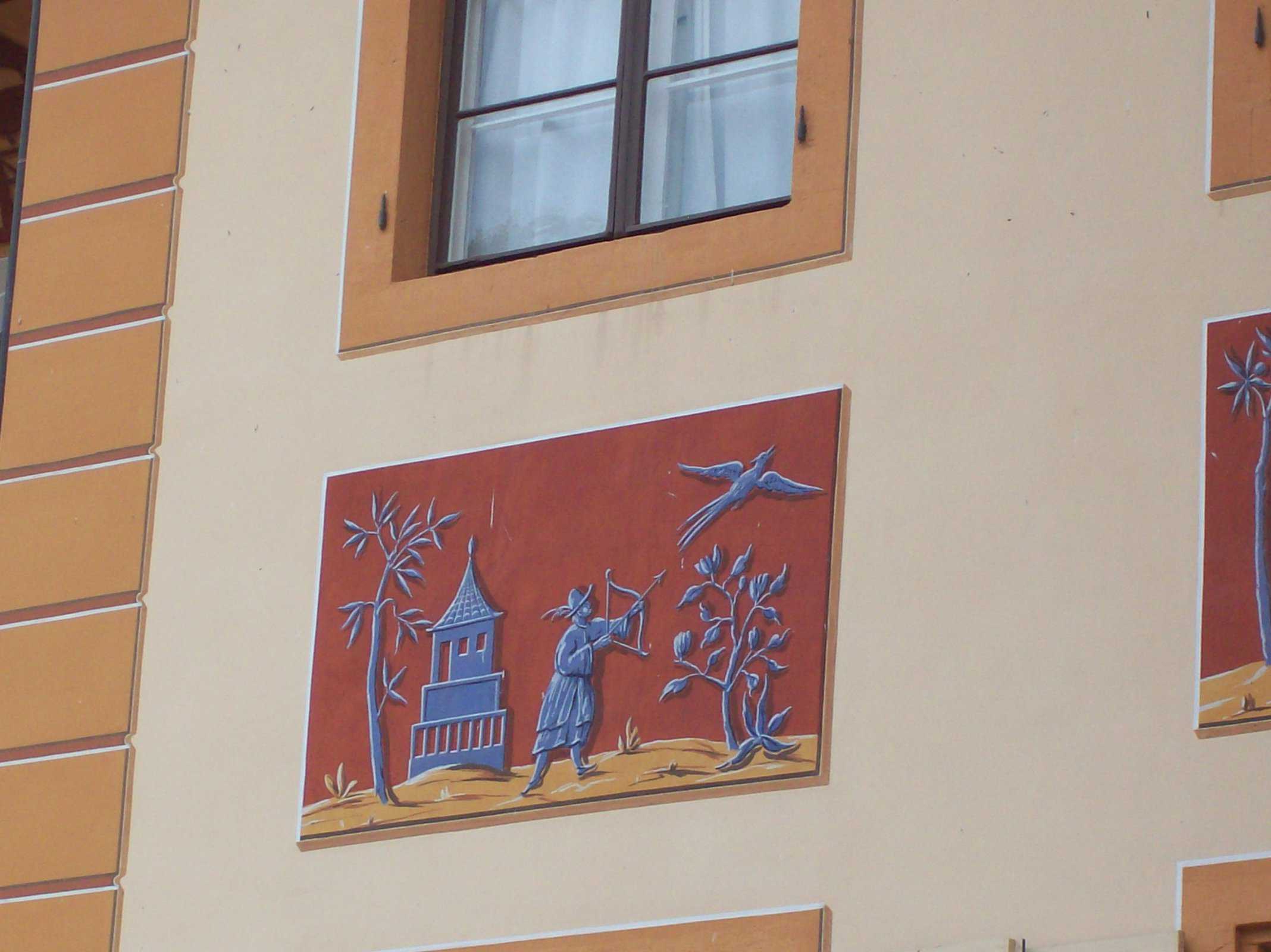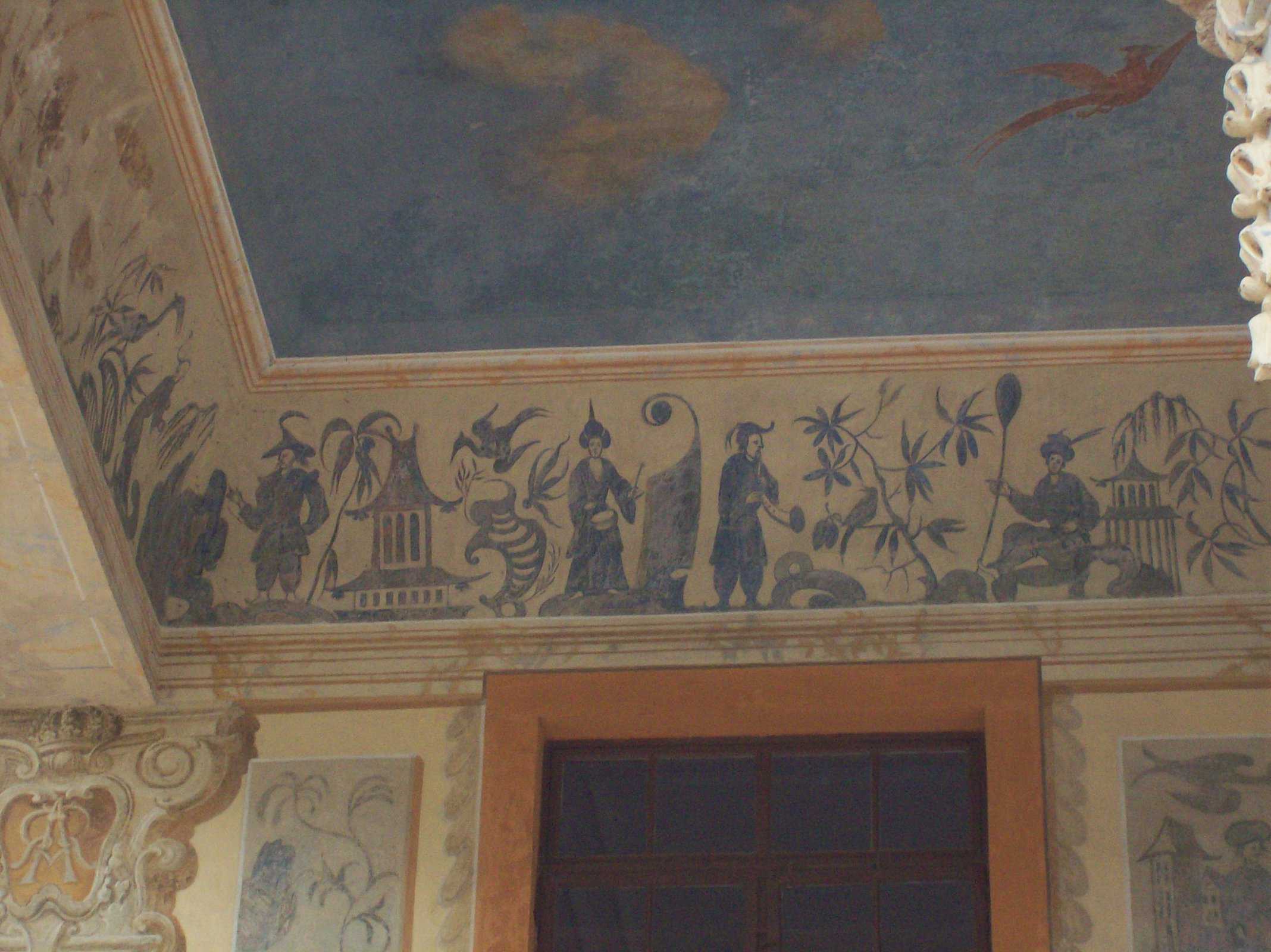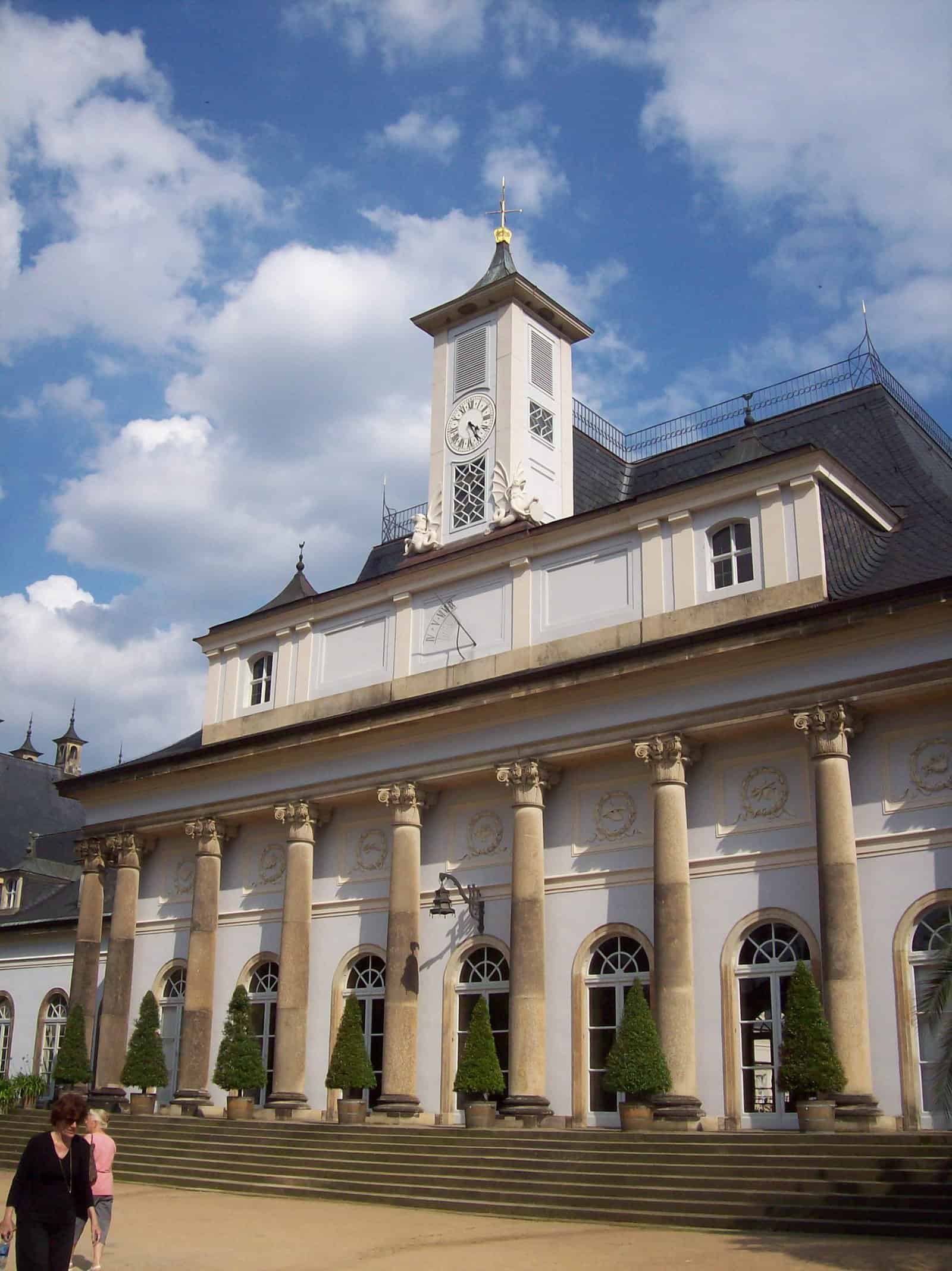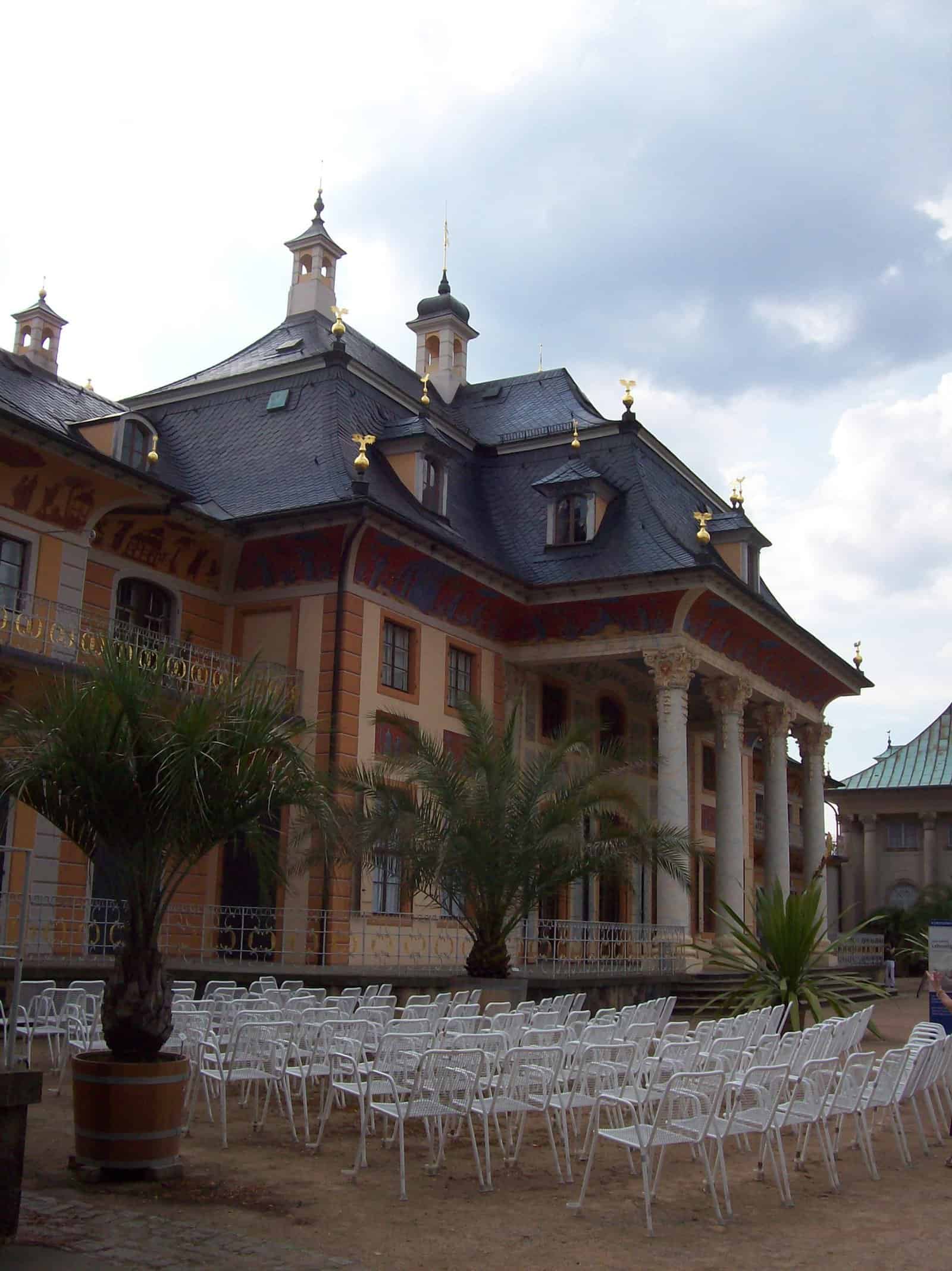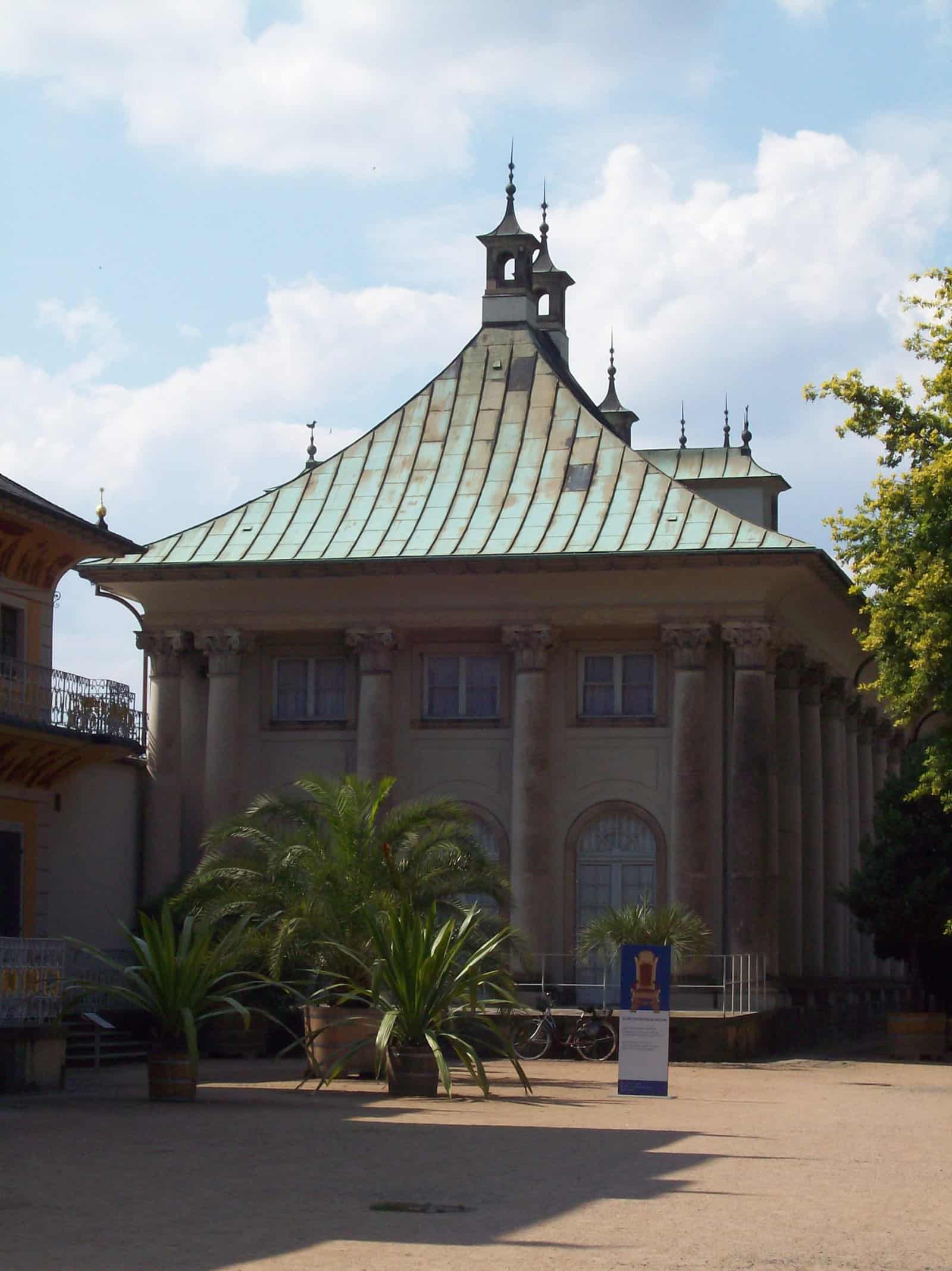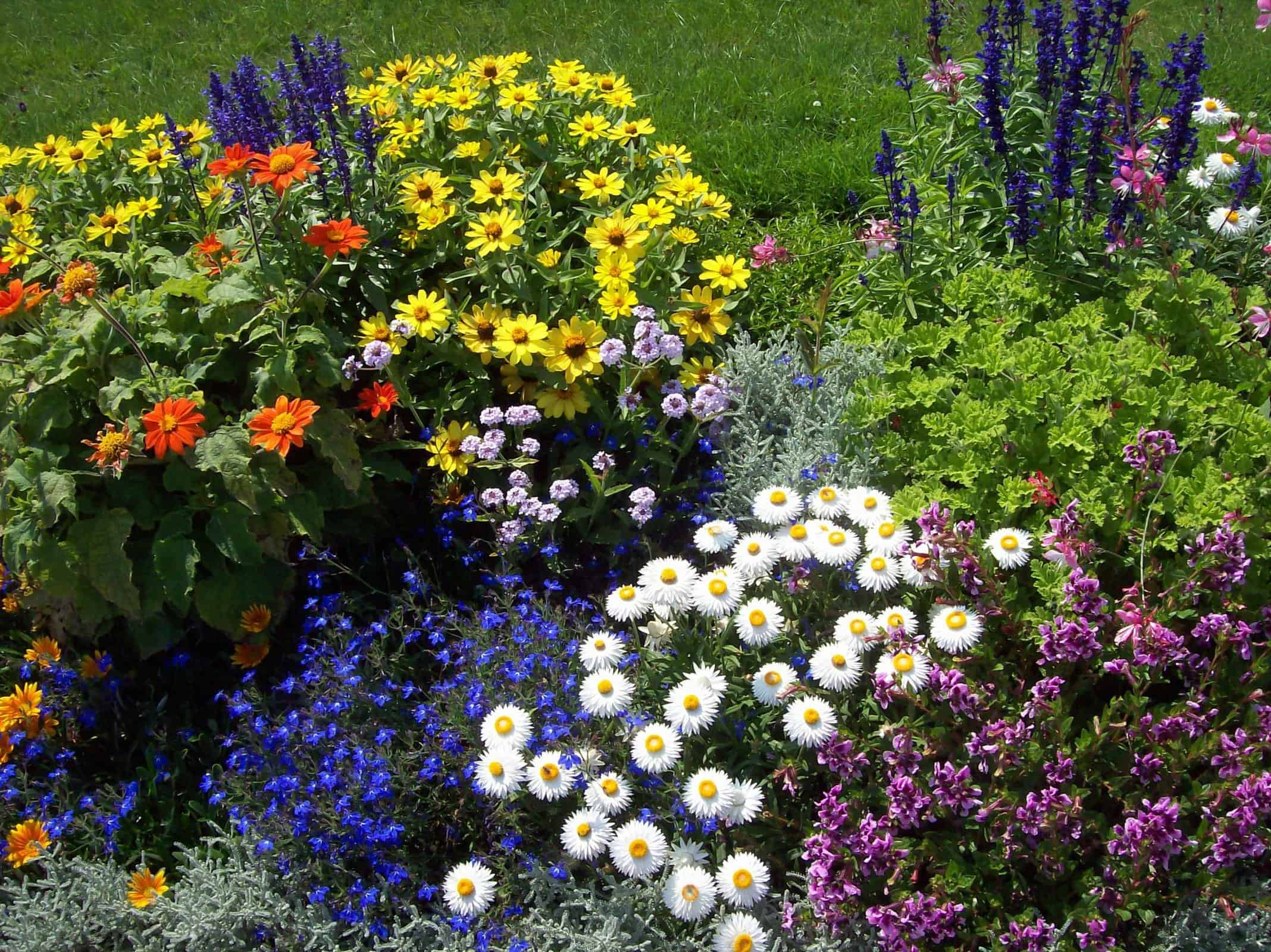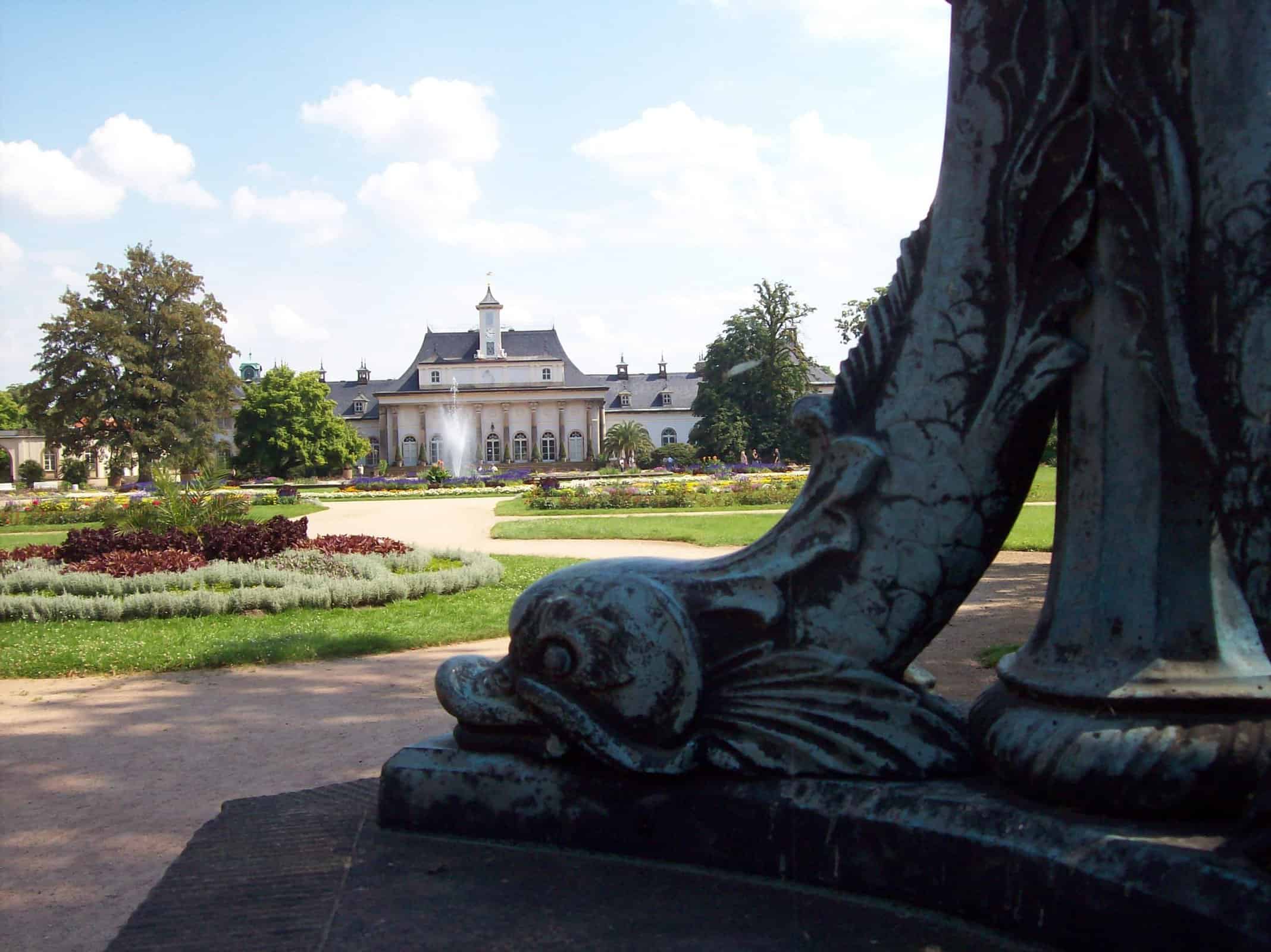Schloss Pillnitz on the banks of the Elbe River near Dresden in Germany, is a wonderful place to visit for tourists who love culture or nature.
The first reference to Pillnitz Palace and Park as the seat and mansion of the local nobility was recorded in 1335. At the end of the seventeenth century, it became the property of Augustus the Strong. In 1706 he gave the property to his beloved, Anna Constantia von Cosel, and she lived there from 1713 to 1715. However, the love affair came to an end, and Augustus took the estate back. It was subsequently used, among other things, for all sorts of extravagant parties and weddings. Mask balls were held, slides and merry-go-rounds were erected, and all sorts of baroque entertainment were offered. More buildings were constructed over time. From 1788 to 1791 a Chinese garden was built there and in 1804 Christian Friedrich Schuricht added a Chinese Pavilion to the complex. Chinese architecture and decorations with a Chinese theme were high fashion at the time. On 1 May 1818, a disaster struck the beautiful Pillnitz: a fire destroyed several of the original buildings. Construction of the so-called ‘New Palace’ was then started and lasted until 1830. The nobles of the area henceforth used the complex as their summer home. From 1859 to 1861 the largest then cast-iron greenhouse in Germany was erected there. It covers 660 square meters and is known as the Palm House. After World War II, the whole Pillnitz site was preserved as a museum. In 1990, large-scale restoration work began. It was hardly completed when another disaster threatened: in August 2002 the Elbe River flooded its banks and caused severe damage to the complex. In the restored kitchen of the museum, one can still see the highest flood water mark. It must have been a daunting experience for the people in the area. Fortunately, everything is fully restored. Nowadays visitors can enjoy the beautiful gardens, visit the palace museum or craft museum, order something to eat in the tea garden or support the shops of all kinds of craftsmen such as glassblowers. Pillnitz can be reached overland or, even better (and more romantic!), by boat on the Elbe River.
The restoration of the Palm House was completed in 2009. Visitors can admire indigenous plants from South Africa, New Zealand and Australia there. At the time the Palm House was built, the collection of plants from exotic parts of the world was high fashion in Europe. Under the guidance of landscape architects and botanists such as Peter Joseph Lenné (1789-1866), beautiful plant collections were gathered. The restored Palm House manages to revive the former glory of this greenhouse. Visitors can admire plants like our king protea, strelitzias and palm trees. It is also a beautiful reminder of interest in our South African plant life and its unique conservation on foreign soil in the past.
In summer, the gardens are a haven of multi-coloured flowers and old trees. People roam around in the shade, children chase butterflies, and every now and then the boat docks to pick up and drop off passengers. A day goes by quickly at Schloss Pillnitz!



